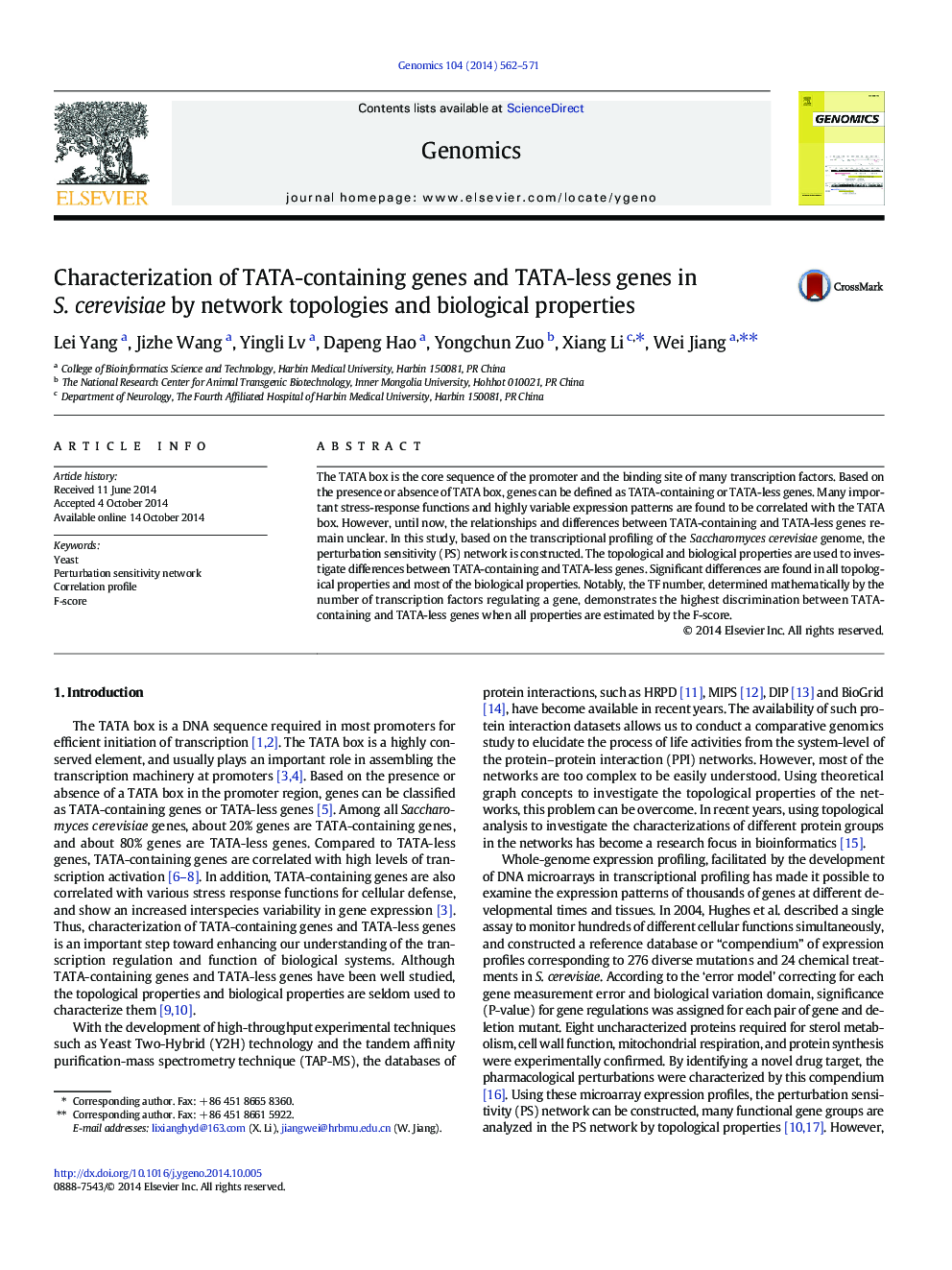| Article ID | Journal | Published Year | Pages | File Type |
|---|---|---|---|---|
| 2820683 | Genomics | 2014 | 10 Pages |
Highlight•The perturbation sensitivity (PS) network is constructed from transcriptional profiling of S. cerevisiae.•Topological and biological properties are used to analyze TATA-containing and TATA-less genes.•The F-score is used to measure the difference between each property.
The TATA box is the core sequence of the promoter and the binding site of many transcription factors. Based on the presence or absence of TATA box, genes can be defined as TATA-containing or TATA-less genes. Many important stress-response functions and highly variable expression patterns are found to be correlated with the TATA box. However, until now, the relationships and differences between TATA-containing and TATA-less genes remain unclear. In this study, based on the transcriptional profiling of the Saccharomyces cerevisiae genome, the perturbation sensitivity (PS) network is constructed. The topological and biological properties are used to investigate differences between TATA-containing and TATA-less genes. Significant differences are found in all topological properties and most of the biological properties. Notably, the TF number, determined mathematically by the number of transcription factors regulating a gene, demonstrates the highest discrimination between TATA-containing and TATA-less genes when all properties are estimated by the F-score.
